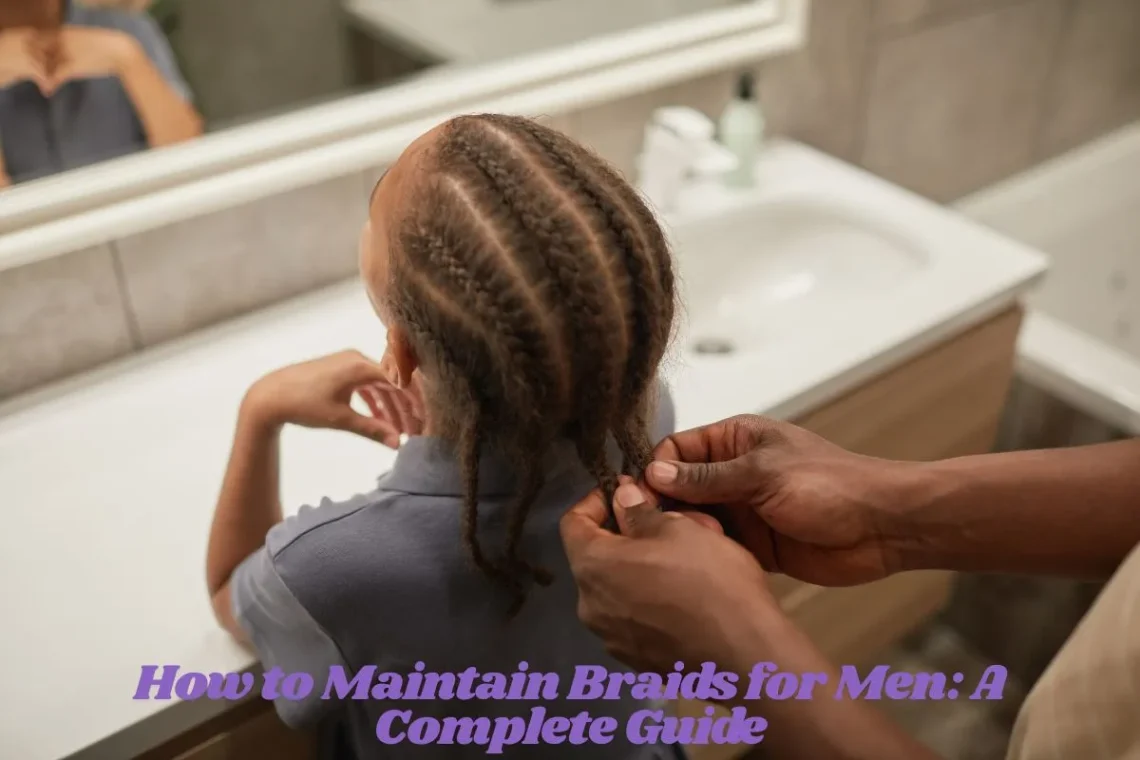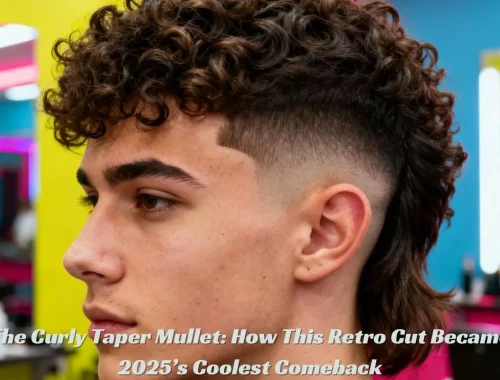
How to Maintain Braids for Men: A Complete Guide
Braids have become one of the most popular protective hairstyles for men, offering a blend of style, function, and cultural expression. Whether you’re rocking box braids, cornrows, or something custom, knowing how to maintain braids for men is key to keeping them fresh, neat, and long-lasting.
In this complete guide, you’ll learn everything from daily braid upkeep tips and scalp care for braided hair to the best products, moisturizing techniques, and how to avoid traction alopecia.
Table of Contents
Toggle1. Start with Proper Braid Installation
Maintenance begins the moment your braids are done. If your braids are too tight or poorly parted, they’ll not only look messy but can also lead to scalp issues and hairline thinning.
Low-tension styling is critical—this ensures your hair strands and scalp aren’t under too much pressure, which is especially important for men with sensitive hairlines. Proper braid installation sets the stage for easier maintenance and longer-lasting style.
2. Daily Maintenance Routine for Braids
Keeping your braids neat each day doesn’t have to be time-consuming. A few minutes of daily braid upkeep can extend the life of your style and promote healthy hair growth.
a. Use a Satin or Silk Headwrap
Sleeping without covering your braids leads to frizz and dryness. A satin or silk headwrap or pillowcase reduces friction, retains moisture, and preserves the neatness of your braids. This is one of the simplest yet most effective nighttime braid maintenance steps.
b. Scalp Moisturizing Methods
Men often forget about scalp care for braided hair, but your scalp is just as important as your strands. Use a hydrating leave-in conditioner or a natural hair oil like jojoba, coconut, or argan oil to moisturize the scalp without causing buildup.
Pro Tip: A gentle scalp massage improves blood circulation, promotes growth, and relieves tension.
3. Weekly Wash Routine
Yes, you can and should wash your braids, but the method matters. Overwashing or using the wrong shampoo can cause frizz or even loosen your braids prematurely.
a. Washing Braids Without Frizz
Use a diluted, sulfate-free shampoo and gently squeeze it through your scalp and braids. Follow up with a lightweight conditioner, rinse thoroughly, and pat dry with a microfiber towel.
Washing every 1–2 weeks strikes a balance between cleanliness and longevity.
b. Weekly Braid Cleansing & Build-Up Removal
If you’re using oils regularly, be sure to clarify your scalp occasionally to prevent buildup. Products designed for protective hairstyles for men can help.
4. Moisturizing Braids for Men
Dry braids lead to brittleness and breakage, especially if you’re active or live in dry climates.
Apply hydrating leave-in conditioner or braid spray every few days. Products with natural hair oils and scalp-friendly formulas are ideal. Avoid heavy creams that can clog pores or create residue.
Maintaining moisture balance is key to long-lasting braid care.
5. Best Products for Men’s Braids
To support your men’s braid care routine, here are some product recommendations:
-
Braid Spray with tea tree or peppermint oil for itch relief
-
Lightweight Oil Mixes (like jojoba or almond)
-
Dry Shampoo for quick refreshes
-
Edge Control Gel to tame flyaways and baby hairs
-
Satin Durag or Bonnet for overnight protection
Look for ingredients that hydrate, soothe, and support scalp health without heavy residue.
6. How to Sleep with Braids
As mentioned, covering your braids at night is essential. If you prefer not to use a headwrap, consider sleeping on a satin pillowcase to reduce friction.
Before bed:
-
Lightly spritz your braids with a moisturizing mist
-
Use a protective nighttime routine like tying your hair back in a loose ponytail or bun
-
Avoid sleeping with wet braids
Following a solid nighttime braid maintenance routine helps prevent frizz, tangling, and breakage.
7. Preventing Frizz in Braids
Even perfectly done braids can frizz over time. Here’s how to prevent frizz in braids and keep them looking clean:
-
Avoid excessive touching or scratching your scalp
-
Moisturize regularly
-
Tie down flyaways with edge control
-
Redo your front or perimeter braids as needed
A refreshing men’s braids at home routine every 2–3 weeks can revive your style without a full redo.
8. How Long Can You Keep Braids?
You can typically wear braids for 4 to 8 weeks, depending on your hair type, braid size, and maintenance.
However, wearing braids too long increases the risk of:
-
Traction alopecia (hair loss from prolonged pulling)
-
Product and dirt buildup
-
Scalp irritation or dandruff
Make sure you listen to your scalp—if it itches, flakes, or feels tight, it might be time for a change.
9. Post-Braid Hair Recovery Tips
Once you remove your braids, give your hair and scalp a break:
-
Do a thorough detangling session
-
Use a deep conditioner or protein treatment
-
Avoid tight hairstyles for a week or two
-
Trim any split ends
A well-managed hair recovery period will prepare your strands for the next style and promote long-term growth.
10. Final Tips for Men’s Braid Care Routine
Let’s wrap up with key takeaways to maintain healthy and stylish braids:
✅ Keep your scalp clean and moisturized
✅ Use low-tension styles to avoid traction alopecia
✅ Always protect your braids while sleeping
✅ Avoid product overload and cleanse regularly
✅ Listen to your scalp—it’s the first to warn you of issues
Whether you’re new to braids or a seasoned wearer, understanding and applying these techniques ensures you not only look good but protect your hair in the process.
Conclusion
Braids are more than just a trend—they’re a cultural statement, a low-maintenance style, and a way to protect your natural hair. With a little effort and the right men’s braid care routine, your braids can stay clean, fresh, and healthy for weeks.
From choosing the best products for men’s braids to mastering scalp moisturizing methods and washing braids without frizz, your routine matters. Take care of your hair now, and it’ll thank you later—with length, strength, and style.
You May Also Like

The Curly Taper Mullet: How This Retro Cut Became 2025’s Coolest Comeback
October 8, 2025
What Are the Different Types of Hoodies? A Friendly, Complete Guide
June 26, 2025

